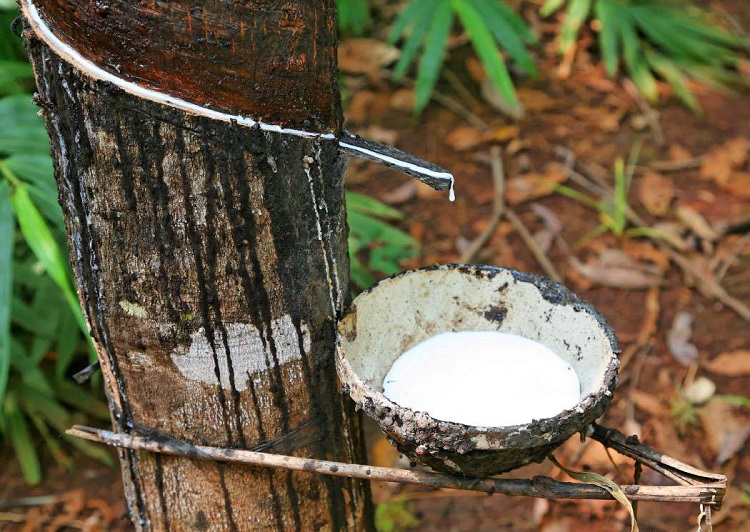Hevea, also known as rubber, is a tropical plant that produces a natural gum that is highly prized by industry. But to obtain abundant, high-quality production, it is essential to master the cultivation and production techniques specific to the rubber tree. In this article, we’ll be revealing the secrets to growing rubber trees and producing exceptional harvests.
Choix du terrain
The first secret to growing rubber trees is to choose suitable land. Rubber trees need a warm, humid climate, with temperatures between 20 and 30°C. It is also important to select a site with a good altitude, between 0 and 500 metres, to obtain optimum quality.
Preparing the soil
Before planting rubber trees, it is essential to prepare the soil. Rubber trees need nutrient-rich soil with a pH of between 5.5 and 6.5. It is therefore important to fertilise the soil with organic or chemical fertilisers. It is also advisable to plough the soil to remove weeds and debris.
Planting rubber trees
Planting the rubber trees is a crucial stage in obtaining exceptional harvests. The rubber trees should be planted 2 to 3 metres apart to allow good air circulation and optimum light reception. It is important to plant rubber trees in well-drained, nutrient-rich soil.
Rubber tree maintenance
Maintaining the rubber trees is essential for obtaining exceptional harvests. It is important to provide the rubber trees with an adequate amount of water, depending on the season and climate. It is also advisable to fertilise the trees regularly, to provide them with the nutrients they need to grow.
Pests and diseases
Pests and diseases are common problems in rubber cultivation. The main pests of rubber trees are insects and fungi. The most common diseases are leaf rot and root rot. It is important to monitor rubber trees regularly for the first signs of pests or diseases, and to take appropriate measures to control them.
Harvest
Harvesting is the final stage in rubber tree cultivation. The natural gum is harvested by making incisions in the trunk of the rubber tree, which allows the gum to flow out. It is important to harvest the gum when it is ripe, to obtain optimum quality.
Gum processing
After harvesting, it is important to process the gum to remove impurities and make it suitable for industrial use. Gum processing is a crucial step in obtaining exceptional quality. Traditional processing methods, such as coagulation and drying, are recommended to preserve the gum’s properties.
Conclusion
Rubber tree cultivation is a complex process that requires a great deal of attention and meticulous care. By following these steps and mastering the cultivation and production techniques specific to the rubber tree, you can obtain exceptional harvests and natural gum of outstanding quality. Agreca-Coopca, your partner for sustainable cash crop farming, offers advice and training to help you improve your rubber cultivation practices and obtain exceptional harvests.

